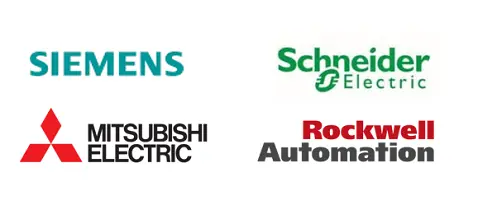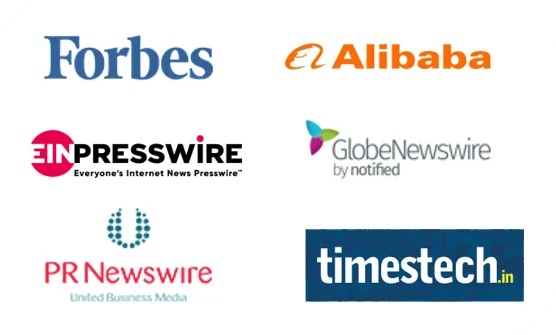Market Overview:
"The global sensors market was valued at US$ 190.2 billion in 2024 and is expected to register a CAGR of 7.5% over the forecast period and reach US$ 364.7 billion in 2033."
|
Report Attributes |
Details |
|
Base Year |
2024 |
|
Forecast Years |
2025-2033 |
|
Historical Years |
2021-2024 |
|
Sensors Market Growth Rate (2025-2033) |
7.5% |
The sensor market refers to the global industry that manufactures, distributes, and sells sensors. Sensors are the devices that perceive and measure physical abilities like temperature, pressure, light, motion and proximity. They basically change physical inputs into electrical signals that can then be examined, processed, or used in variety of applications.
The sensors industry has seen tremendous expansion and innovation over the years, owing to technological improvements, the rise of the internet of things, and rising need for automation and data-driven insights. The sensors market is likely to increase more in the future years as businesses continue to explore new applications and technology. The sensors market is also significantly shaped by other elements such as government laws, environmental concerns, and growing uses in various industries.
Sensors Market Trends and Drivers:
Internet of Things (loT) Integration: The need for various types of sensors, such as temperature, humidity, motion, and proximity sectors, is driven by loT applications. Sensor integration in linked devices and system helps in data collecting and analysis for enhanced automation and efficiency.
Automotive Advancements: With the growing popularity of electric cars (EV’s) and self-driving technology, the automotive industry is the major driver of sensor market. Sensors such as LiDAR, radar, and camera are critical components in advanced driver assistance systems (ADAS) and autonomous vehicles.
Industrial Automation: As a result of implementation of industry 4.0 principles and smart manufacturing, the sensors market demand in industrial settings has increased. Sensors are employed for predictive maintenance, process optimization, and quality control, which results in enhanced efficiency and decreased downtime.
Healthcare Applications: Sensors play an essential role in the healthcare sector, with wearables, remote patient monitoring and medical equipment all benefiting from their use. These sensors help to enhance patient outcomes and provide individualized healthcare solutions.
Environmental Sensors: They are gaining popularity as a means of monitoring air quality, water contamination, and climate change. Governments and organizations are spending more in such sensors in order to address environmental problems and promote sustainable practices.
Downsizing and Integration: Sensor’s makers focus on downsizing and the integration of numerous functionalities into a single sensor to meet the demands of compact devices while lowering the total costs.
Sensors Market Restraining Factors:
High Costs: Sensors can be costly to create, manufacture, and deplay, which limits their use in certain sectors and applications.
Technological Limitations: Some sensors may be limited in terms of accuracy, sensitivity, or robustness, making then unsuitable for use in particular conditions.
Data Privacy and Security Worries: As sensors generate huge volumes of data, there are worries about data privacy and security that may prevent some potential consumers.
Interoperability Issues: Different sensors technology and standards may not always be interoperable, making the sensor integration challenging.
Power Requirements: Many sensors require power sources, and in some applications, the necessity for regular battery charging can be constant.
Regulatory requirements: Regulations and regulations governing the use of sensors, particularly in sensitive industries such as healthcare and transportation, might stifle market expansion.
Law of Awareness and Education: Some prospective users may be unaware of the benefits and applications of sensors, resulting in the slow adoption.
Sensors Market Opportunities:
loT and Smart Devices: Sensor’s makers face enormous prospects as the internet of things (loT) expands and smart gadgets becomes more popular. These gadgets frequently require a variety of sensors in order to collect the data and enable the capabilities.
Automotive Industry: The automotive industry is a significant market for sensor producers. Sensors such as LiDAR, radar and cameras are in high demand as cars grow more complex and autonomous.
Healthcare Sector: Sensors are very essential in the healthcare business, from fitness trackers to medical gadgets. Sensor makers might capitalize on the growing emphasis on health and well being by entering this industry.
Industrial Automation: Sensors are essential in the field of industrial automation and industry 4.0 for data collecting, process monitoring, and control. Manufacturers might look into chances in this industry.
Environmental Monitoring: With increase concerns about the climate change band its influence on the environment, there is an increase in demand for environmental monitoring sensors such as air quality monitors, weather monitoring devices and pollution detectors.
Agribusiness and Precision Farming: Sensor technology for precision farming can improve the agriculture sector by enabling optimal resource usage and crop management.
Consumer Electronics: Consumer devices, such as smartphones, tablets, and wearables, are constantly evolving, providing opportunity for sensor producers to innovate and improve the user experiences.
Robotics and drones: Sensor integration for navigation, obstacle avoidance, and object recognition is critical to the evolution of robotics and drone technology.
Security and Monitoring: The need for various sensors such as motion detectors, cameras, and biometric sensors driven by the demand for the security and surveillance systems in both residential and business settings.
Aerospace and Space Exploration: As the space exploration and aerospace sectors progress, the demand for high performance sensors rises, creating opportunity for manufacturers in the sector.
Sensors Market Segmentation:
By Sensor Type
- Automotive Sensors
- Industrial Sensors
- Wearable Sensors
- Aircraft Sensors
- Temperature Sensors
- Photonic Sensors
- Distributed Fiber Optic Sensors
By End-User Industry
- Oil & Gas
- Pharmaceutical
- Chemicals
- Manufacturing
- Mining
- Energy & Power
- Automotive
- Aerospace & Defense
- Building Automation
- Telecom
Sensors Market, by Region:
North America
- United States
- Canada
Europe
- Germany
- United Kingdom
- France
- Italy
- Spain
- Russia
- Poland
- BENELUX
- NORDIC
- Rest of Europe
Asia Pacific
- China
- Japan
- India
- South Korea
- ASEAN
- Australia & New Zealand
- Rest of Asia Pacific
Latin America
- Brazil
- Mexico
- Argentina
Middle East & Africa
- Saudi Arabia
- South Africa
- United Arab Emirates
- Israel
- Rest of MEA
Several factors work together to boast European sensors industry, continuous advancements in sensor technologies are driven by technological innovation and a strong focus on research and development. With the developing internet of things ecosystem and the region’s focus on industrial automation across many industries, there is a high need of sensors to improve process efficiency and enable networked devices and systems. Furthermore, the adoption of sensors for pollution monitoring and compliance with sustainability objectives is facilitated by the severe environmental legislation in Europe
Due to the rapid industrialization, urbanization and increased technological investments, Asia Pacific is one of the fastest-growing regions for the sensor use. China, Japan, and South Korea are the leading nations in the sensors market.
Latin America is a region with significant potential for growth, notably in the automobile and industrial sectors. The sensors market is expanding as a result of numerous factors. There is a strong demand for sensors in a variety of applications due to the region’s growing technology and digital transformation.
The Middle East and Africa are seeing an increase in industries like oil and gas, mining, and the infrastructure construction.
Leading Companies in Sensors Market & Competitive Landscape:
The Sensors market is highly competitive, with several key players vying for market share and actively engaging in strategic initiatives. These companies focus on product innovation, technological advancements, and expanding their product portfolios to gain a competitive edge. These companies are continuously investing in research and development activities to enhance their product offerings and cater to the evolving needs of customers in terms of efficiency, performance, and sustainability.
Company List
- Analog Devices, Inc.
- Infineon Technologies Ag
- Stmicroelectronics
- Te Connectivity Ltd.
- Microchip Technology
- Nxp Semiconductors N.V.
- Abb Ltd.
- Siemens Ag
- Robert Bosch Gmbh
- Honeywell International
- Tdk Corporation
- Eaton Corporation Plc
- Emerson Electric Company
- General Electric Company (Ge)
- Legrand
- Texas Instruments Incorporated
- Balluff Gmbh
- Sensirion Ag
- Qualcomm Technologies, Inc.
- Memsic Inc.
- Airmar Technology Corporation
- Vishay Precision Group, Inc.
- Gill Sensors & Controls Limited
- Murata Manufacturing Co., Ltd.
- Renesas Electronics Corporation (Renesas)
Research Scope
|
Report Metric |
Report Details |
|
Sensors Market size available for the years |
2021-2033 |
|
Base Year |
2024 |
|
Forecast Period |
2025-2033 |
|
Compound Annual Growth Rate (CAGR) |
7.5% |
|
Segment covered |
By sensor type, end-user, and region |
|
Regions Covered |
North America: The U.S. & Canada Latin America: Brazil, Mexico, Argentina, & Rest of Latin America Asia Pacific: China, India, Japan, Australia & New Zealand, ASEAN, & Rest of Asia Pacific Europe: Germany, The U.K., France, Spain, Italy, Russia, Poland, BENELUX, NORDIC, & Rest of Europe The Middle East & Africa: Saudi Arabia, United Arab Emirates, South Africa, Egypt, Israel, and Rest of MEA |
|
Fastest Growing Country in Europe |
Germany |
|
Largest Market in Asia Pacific |
China |
|
Key Players |
Analog Devices, Inc., Infineon Technologies Ag, Stmicroelectronics, Te Connectivity Ltd., Microchip Technology, Nxp Semiconductors N.V., Abb Ltd., Siemens Ag, Robert Bosch Gmbh, Honeywell International, Tdk Corporation, Eaton Corporation Plc, Emerson Electric Company, General Electric Company (Ge), Legrand, Texas Instruments Incorporated, Balluff Gmbh, Sensirion Ag, Qualcomm Technologies, Inc., Memsic Inc., Airmar Technology Corporation, Vishay Precision Group, Inc., Gill Sensors & Controls Limited, Murata Manufacturing Co., Ltd., Renesas Electronics Corporation (Renesas), among others |
Frequently Asked Question
What are some key factors driving revenue growth of the global sensors market?
Some key factors driving market revenue growth include internet of things (loT integration, automotive advancements, industrial automation, healthcare applications, environmental sensors and downsizing and integration.
What are some major challenges faced by companies in the global sensors market?
Companies face challenges such as high costs, technological limitations, data privacy and security worries, interoperability issues, power requirements, regulatory requirements, law of awareness and education.
How is the competitive landscape in the global sensors market?
The market is competitive, with key players focusing on technological advancements, product innovation, and strategic partnerships. Factors such as product quality, reliability, after-sales services, and customization capabilities play a significant role in determining competitiveness.
What are the potential opportunities for companies in the Global Sensors Market?
Companies can leverage opportunities such as loT and smart devices, automotive industry, healthcare sector, industrial automation, environmental monitoring, agribusiness and precision farming, consumer electronics, robotics and drones, security and monitoring, and aerospace and monitoring.
How is the global sensors market segmented?
The market is segmented based on factors such as sensor type, end-user, and regions.

